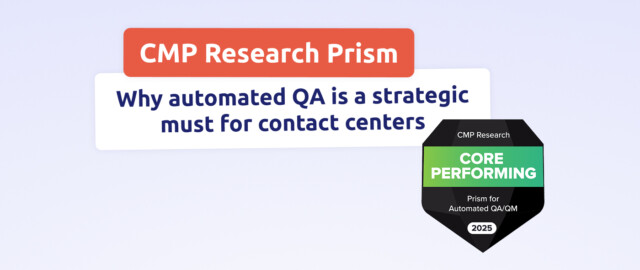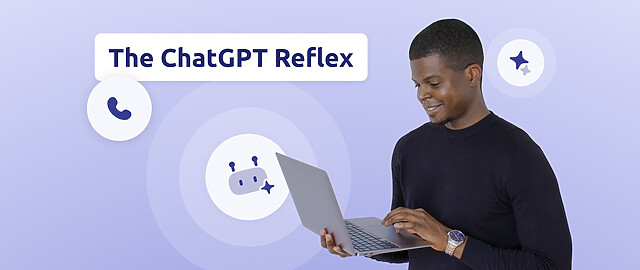Why now? Three drivers pushing QA automation forward
- Misaligned metrics: Traditional QA scorecards frequently don’t correlate with actual customer satisfaction (CSAT) or Net Promoter Scores (NPS). CMP Research finds executives consistently frustrated by the disconnect between internal QA scores and real-world customer experience.
- Cost pressures and hiring freezes: Many organizations face reduced headcount and tighter budgets. CMP notes that CX leaders are shifting focus from hiring additional QA staff to augmenting existing teams with automated tools to manage greater workloads efficiently.
- Rise of automation and self-service channels: More customer interactions now flow through digital and automated channels like voicebots and chatbots. QA programs must extend beyond human interactions, ensuring consistent quality regardless of channel.
Where traditional QA methods fall short
According to CMP’s recent Prism report evaluating automated QA/QM platforms, manual QA methods are inherently limited. Analysts noted widespread frustration due to “bloated” and outdated scoring criteria, which dilute meaningful insights. As contact volumes and complexity rise, manual sampling methods (often covering less than 5% of interactions) simply cannot scale or maintain accuracy.
Leaders increasingly recognize this gap. Real-time, AI-driven scoring methods are now essential for organizations aiming for 100% interaction coverage and truly actionable customer insights.
What automated QA delivers
BUSINESS NEED | AUTOMATED OUTCOME |
Match QA to CSAT | AI pinpoints the exact behaviors that move customer satisfaction score, or CSAT—closing the checklist gap |
Reduce cost-to-serve | Diabolocom clients cut QA review effort by 97 % through full-coverage automation |
Coach in real time | Live sentiment flags and silence alerts guide agents mid-call and even populate dynamic fields in CRM, accelerating performance |
Key benefits driving automated QA adoption (CMP Research):
- Stronger correlation to CSAT: Automated QA platforms, using advanced AI models, are identifying specific behaviors that drive customer satisfaction and loyalty—something manual checklists consistently miss.
- Significant cost reduction: Enterprises using automated QA solutions report major efficiency gains. For instance, Diabolocom clients have achieved up to a 97% reduction in QA review costs by replacing manual scoring with automated assessments.
Proactive agent coaching and development: With automated QA handling routine scoring, human analysts can focus more strategically on coaching frontline agents, directly improving agent performance and reducing churn.
Why the human element remains critical
CMP analysts emphasize that workflow automation complements—but never replaces—the human touch. They highlight the continued necessity of human-in-the-loop functionality, allowing QA experts to guide AI models, adjust scoring logic, and maintain accuracy. Automated QA tools thus empower QA teams to transition from routine scoring to strategic, proactive roles that significantly influence agent development and customer satisfaction.
Real-world proof: Why leading CX organizations automate QA
Automated QA is no longer speculative. CMP’s evaluation includes data-backed examples illustrating how industry leaders are already achieving significant outcomes:
- Coverage: Moving from sampling less than 5% of interactions to scoring 100%, dramatically reducing blind spots.
- Cost management: Achieving substantial reductions in QA-related operational expenses.
- Speed of insight: Real-time feedback allows agents and supervisors to immediately address negative customer experiences or compliance risks.
Diabolocom was recognized in CMP’s Prism as a top-tier automated QA provider for precisely these capabilities: comprehensive scoring, robust AI-driven insights, flexible deployment, and measurable improvements in CSAT and cost efficiency.
Next steps: Turning insight into action
Executives seeking to maintain competitive advantage must view automated QA as more than just technology—it’s a strategic enabler of customer satisfaction and operational efficiency. The good news? CMP’s latest research offers clear, actionable guidance to understand the automated QA/QM landscape and make informed decisions aligned to your specific business priorities.
Explore the full CMP 2025 Automated QA Report



